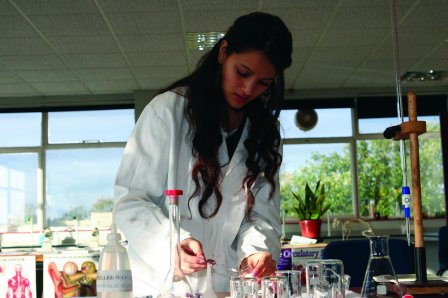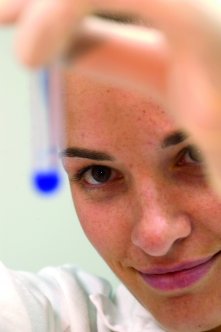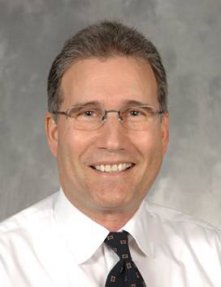
Dr. Ami Shalit admits that his job has its unconventional aspects. As the director and academic secretary of the Feinberg Graduate School, Dr. Shalit explains that a critical aspect of his role at the academic arm of the Weizmann Institute of Science (WIS) is “to swim in the students’ veins, understanding what their needs are.”
It is an extraordinary job description for any administrator, and Dr. Shalit’s degree of involvement with the Feinberg Graduate School’s students is all the more remarkable considering the depth and variety of students. In an effort to fulfill its mission of educating future scientific leaders, the school grants all of its nearly one thousand master’s and Ph.D. students full tuition remission and stipends. This policy allows the graduate students to focus their complete attention on the scientific achievements for which the Weizmann Institute is known.
As Paul Berkman, a member of the the American Committee for the Weizmann Institute of Science’s (ACWIS’s) Board of Directors, explained during a recent event in New York, students at the Feinberg Graduate School are currently on the cutting edge of scientific research in diverse fields, including nanotechnology, the search for new energy sources, agriculture, cures for cancer, and the search for treatments for everything from Alzheimer’s disease to the flu. Mr. Berkman welcomed the New York audience with a presentation titled “Responsibility for the Future: Educating Scientists.” The program featured comments from Dr. David J. Haas, a former postdoctoral fellow at the Institute who has enjoyed a successful career in technology and business, and who is today an active supporter of ACWIS.
The Feinberg Graduate School was founded in 1958 to function in conjunction with WIS. In 2000, Dr. Shalit, a distinguished linguistic researcher, assumed responsibility for its day-to-day operations. He is familiar with the needs of students from around the world, having received his undergraduate education at New York University and his graduate training at the University of Toronto in Canada and the University of Cape Town in South Africa.
Admission to the Feinberg Graduate School is highly competitive. Of about 800 applicants to the Master of Science program each year, only 150 are admitted. New doctoral admissions are limited to 165 annually. Currently, 275 M.Sc. and 685 Ph.D. students are in attendance, creating an intimate atmosphere in which scientists and students regularly communicate across disciplines. One distinguishing feature Dr. Shalit points out is the even gender ratio. Nearly half the students in both degree programs are women, which is unusual for postgraduate science programs. Although more female students are studying the life and chemical sciences, their numbers are surging in physics and mathematics.

Though not designed to foster relationships among students, the graduate programs have yielded many marriages between students. Dr. Shalit was impressed by the dedication of a female M.Sc. student from France who, shortly after entering the program, married a fellow student. By the time she graduated—on schedule with her class—she and her husband already had two children. Being able to support students’ rigorous scientific research while they pursue other life goals is clearly a point of pride for the Feinberg Graduate School’s administrators.
According to Dr. Shalit, the most remarkable aspect of life at the Feinberg Graduate School is students’ direct involvement with groundbreaking research. At any given time scientists at the Institute are engaged in at least 1,200 research projects, every one of which involves graduate student participation. Many students help to develop key patents, while others publish papers in prominent scientific journals.
For example, Dr. Raz Zarivach of the Feinberg Graduate School worked closely with Prof. Ada Yonath of the Department of Structural Biology and incumbent of the Martin S. and Helen Kimmel Chair. Fueled by the desire to elucidate the structure of the ribosome, Prof. Yonath conducted research that yielded striking results, and led to the U.S. National Institutes of Health naming the year 2000 the “Year of the Ribosome.” Dr. Zarivach provided a breakthrough when he discovered a tool for discerning how the ribosome “factory” works. His contribution has paved the way for understanding how disease-causing bacteria develop resistance to antibiotics. This may allow the pharmaceutical industry to develop new drugs designed to prevent that resistance.
Another doctoral student, Yaakov Benenson, assisted Dr. Ehud Shapiro of the Department of Computer Science and Applied Mathematics and the Department of Biological Chemistry, incumbent of the Harry Weinrebe Professorial Chair, in creating the world’s smallest biological computing device. For his crucial contributions, Benenson was included on the 2004 list of the world’s 100 Top Young Innovators by MIT’s Technology Review.
In a study conducted under the guidance of Prof. David Cahen of the Materials and Interfaces Department, who is the incumbent of the Rowland and Sylvia Schaefer Chair in Energy Research, doctoral student Iris Visoly-Fisher was able to investigate how defective solar cells outperform so-called high-quality solar cells. Solar power may very well be the force that transforms the energy industry and reduces human dependence on depleted oil resources; Visoly-Fisher has made an enormous contribution with her discovery that, contrary to previous assumptions, solar cells’ efficiency actually increases with grain-boundary defects.

Though the importance of the scientific research conducted by graduate students at Feinberg is clear, where the support will come from is less so. According to Dr. Shalit, the downward trend of support from the Israeli government has stretched the school’s resources. The school has a charter granted by the Board of Regents of the State of New York, making it eligible for American Schools and Hospitals Abroad (ASHA) grants. ASHA uses the Feinberg Graduate School as an exemplary model of higher education, and it has been the recipient of multiple grants, but this is no guarantee for the future.
According to Dr. David Haas, who was a postdoctoral fellow at the Weizmann Institute in the late 1960s, it is precisely because the Feinberg Graduate School’s students have ample resources available to them that they are able to produce the quality of research they deliver. Students who are “articulate, enthusiastic, and well-trained” are able to produce “remarkable, published results with no worries about the necessary resources and equipment,” he said. Funds are also necessary for graduate students to participate in the larger scientific community through travel to conferences, where they present their work, network, and establish collaborations. Both Dr. Shalit and Dr. Haas emphasized the importance of involving graduate students in the global scientific community—not simply for their own benefit, but for the benefit for humanity.
Though its scientific research has enormous ramifications around the world, the Feinberg Graduate School is an intimate, serene haven. “Every day,” remarked Dr. Shalit, “I go to work with a song in my heart.”
The Weizmann Institute of Science in Rehovot, Israel, is one of the world's foremost centers of scientific research and graduate study. The American Committee for the Weizmann Institute of Science is a community of dedicated people who share a common vision in support of the Institute. The generous assistance the Institute receives from individuals, foundations, and corporations is vital for its future. Committee members show their devotion to the advancement of the Institute's goals by becoming partners in the search for answers to the most difficult challenges facing humanity.
